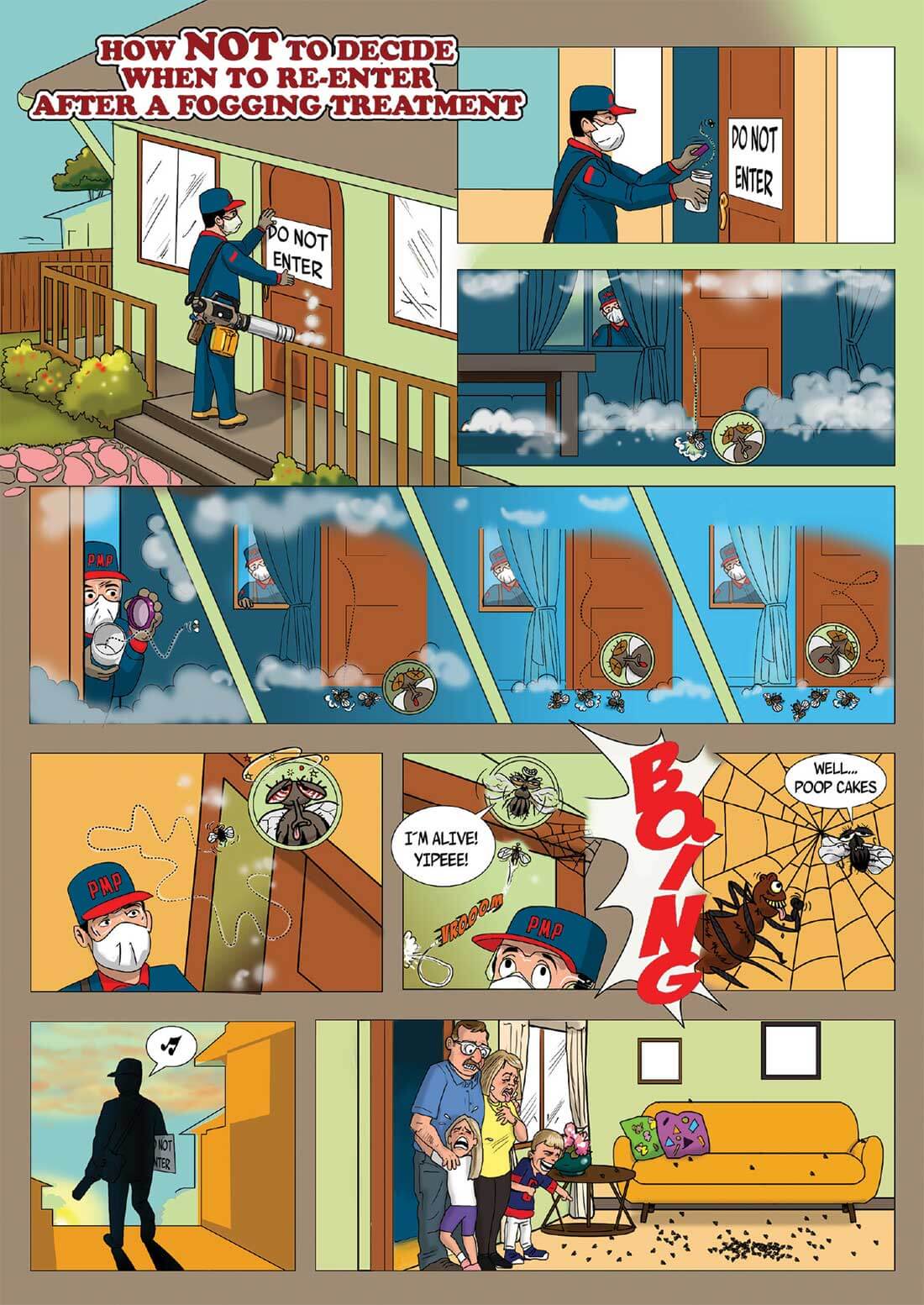When fogging in a structure the label normally says something like “Do not allow ___ to enter until ____ product has been thoroughly ventilated.” The rule of thumb for proper ventilation is at least 3 exchanges of the air volume. That makes sense, but how long does that take?
EPA Guidelines for Ventilation
The EPA has some guidelines for residential homes:
The rate at which outdoor air replaces indoor air is described as the air exchange rate. ASHRAE (formerly called the American Society of Heating, Refrigerating and Air-Conditioning Engineers) recommends (in its Standard 62.2-2016, “Ventilation and Acceptable Indoor Air Quality in Residential Buildings”) that homes receive 0.35 air changes per hour as the minimum ventilation rates in residential buildings in order to provide IAQ that is acceptable to human occupants and that minimizes adverse health effects.
Increase Ventilation Rate with Natural & Mechanical Systems
Most home heating and cooling systems, including forced air heating systems, do not mechanically bring fresh air into the house. Outdoor air enters and leaves a house by:
- Natural ventilation, such as through open windows and doors.
- Infiltration, a process by which outdoor air flows into the house through openings, joints and cracks in walls, floors and ceilings, and around windows and doors.
- Mechanical means, such as through outdoor air intakes associated with the heating, ventilation and air conditioning (HVAC) system; outdoor-vented fans that intermittently remove air from a single room, such as bathrooms and kitchens.
So if you rely on the home’s HVAC system through the infiltration process (minimum of 0.35 air changes per hour) it would 8.6 hours to properly ventilate a residential home.
That is why using mechanical and/or natural ventilation is so important. Opening windows and doors, operating window or attic fans, or running a window air conditioner with the vent control open increases the outdoor ventilation rate.
Most HVAC systems can circulate all of the air in the home every 30 mins. That means using the fan option on your HVAC system and mechanical and/or natural ventilation could reduce proper ventilation time to an hour and thirty minutes.
For commercial facilities, my recommendation is to meet with the maintenance department and/or company that services the HVAC system to determine the air exchange rate. Public facilities have a higher minimum standard than residential homes.

Learn More:
